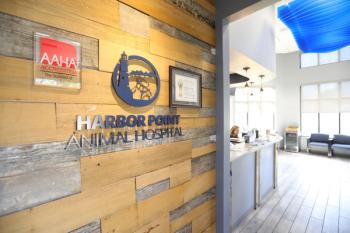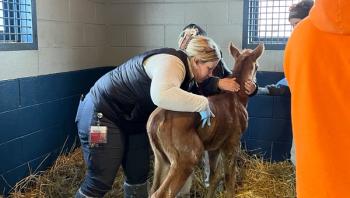
ClinQuiz: Implementing the American Animal Hospital Association's Anesthesia Guidelines (Sponsored by Abbott Animal Health) Answer 2C
ClinQuiz: Implementing the American Animal Hospital Association's Anesthesia Guidelines (Sponsored by Abbott Animal Health) Answer 2C
2 C. — Correct!
This is the best of the three anesthetic plans. The combination of CNS depressants creates a more balanced anesthetic plan and recognizes some individual anesthetic concerns for this geriatric patient. Opioid agonists (strong opioids rather than weak opioids) are useful in most patients with cardiac disease and a preanesthetic opioid will also contribute to analgesia for the expected dental extractions.
A co-induction technique, using a low dose of a dissociative agent just prior to IV injection of the rapid acting hypnotic anesthetic, may reduce dose requirements for other anesthetics and contributes to perioperative analgesia. This technique better addresses analgesic requirements during and for several days after the procedure. Maintenance of heart rate and cardiac output is supported with this drug choice. The use of a higher dose of dissociative plus a benzodiazepine would also be acceptable for higher risk patients, but it may compromise the rapid and smooth recovery to be gained through use of the rapid-acting hypnotic anesthetic. A rapid-acting hypnotic anesthetic allows for prompt recovery from anesthesia and prompt discharge from the hospital with return to normal function.
Adjustment in some aspects, such as the fluid therapy rate, would be tailored in response to patient status.
Hypothermia is a commonly encountered anesthetic problem. Patient warming and insulation facilitates drug elimination and rapid recovery from anesthesia and reduces patient stress. Superior options for effective thermal support are increasingly available and include: warm air blankets, newer-generation dispersed electrical resistance blankets designed for anesthetic and critical care, and electrically heated surgical tables. Caution is always warranted in the application of external supplemental heating to avoid overheating and patient burns.
Newsletter
From exam room tips to practice management insights, get trusted veterinary news delivered straight to your inbox—subscribe to dvm360.




